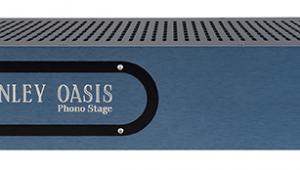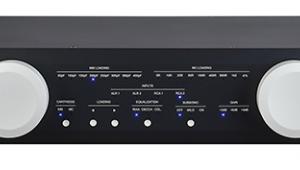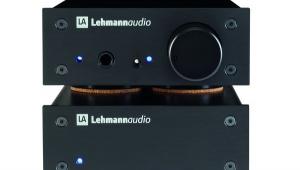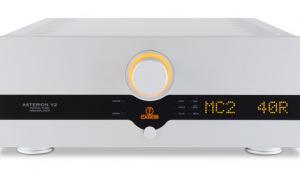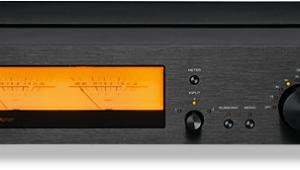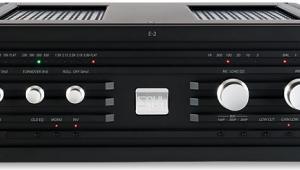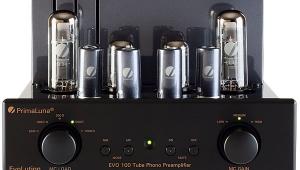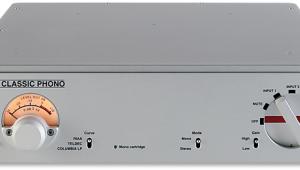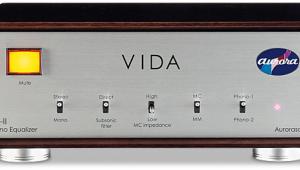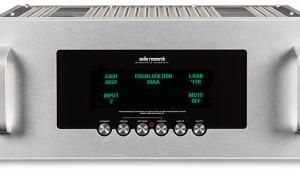Trilogy 907 (£1795)

Superbly put together, the Trilogy 907 is machined out of a solid billet of aluminium. Its made-tohide- away outboard supply shares the same footprint and needs to be separated by at least 250mm, with allowance for ventilation.
It elicited sighs of admiration from audiophiles to whom we was showed it. And when the main chassis was flipped over to reveal easily accessed, sealed for longevity and reliability DIP switches, our LP-lovers were rendered even more pro-907.
The 907 is as minimalist as one can imagine. You connect the phono stage via its captive lead with four-pin plug to the outboard power supply, which in turn accepts AC power from a cable with an IEC three-pin connector. Turntables are connected through gold-plated RCA phono sockets, and output to a preamplifier’s line input is courtesy of the same. A small screw terminal for earthing completes the connections.
You’ll notice no mention of an on/off switch. Trilogy recommends leaving it on at all times. It reaches optimum performance after 15-30 minutes.
Those DIP switches are for discrete left- and right-channel fine-tuning. They deal with gain in levels of 50dB, 64dB or 70dB – which correspond to MM cartridges with 3-5mV output, and MC cartridges either with 0.7-1.5mV or 0.25-0.7mV. The two larger blocks, each with six switches, deal with resistance (nine values between 70ohm and 47kohm) and capacitance (100pF, 200pF, 320pF and 420pF). Perhaps there should be a 68kohm setting for Decca militants, or 1 or 2ohm impedance for certain low-output Japanese MC rarities!
Once powered up, a red light on the fascia shows it’s on, as does the downward glow of blue lights. They come from the 907’s constant current sources, indicating that the Class A shunt regulators on the main board are operating correctly.
As Trilogy uses a servo for DC correction and to provide a low frequency roll-off, albeit with a 20Hz bass peak, arm/cartridge combinations with a resonance frequency in this region might excite it, so pairings around or below 15Hz are advisable. We used the classic Linn combination of Ekos and Arkiv on an LP12 as well as a 12in SME Series V-12 on the SME 20/12 with a variety of cartridges, but found nothing untoward.
STONED OUT
It was the indisputably salacious guitar work on ‘Midnight Rambler’ from The Rolling Stones’ Get Yer Ya-Yas Out that dealt with one overriding concern: can a product rock? Or, indeed, roll? There’s a skill at delivering the nasty, edgy, biting, primal, indisputably sexual tenor of Keith Richards’ rhythm guitarwork. One thing in particular about that recording is a distinctive ring to his chords, a curious quasi-muffled effect.
With a slight leaning toward the higher output MCs, the 907 grappled with The Stones with exactly the right amount of coarse disregard for politesse. A fullness, a richness belied a wholly solid-state step-up, attesting to Trilogy’s passion for tube glow and warmth. It’s as if the 907 is voiced to fatten up the sound ‘just so’. Moving to guitar sounds with more melodic characteristics, specifically the bottleneck playing of Keb’ Mo’, the 907 was able to abandon rasp and grit for sheer liquidity. Indeed, it rose to every occasion.
VERDICT
We fell in love with the 907. It was a combination of the sound, the levels of adjustability for matching a wide range of cartridges, sublime build quality, faultless looks and tiny dimensions. It could even be considered a bargain.


